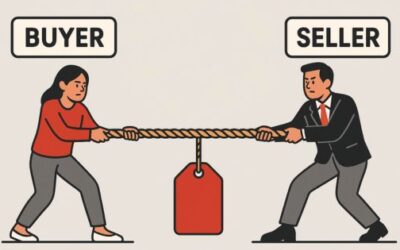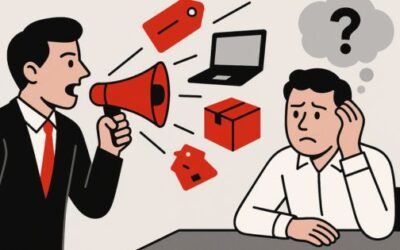Customer-Centric Practices to Reduce Churn – Are you treating your customers like dead beats?
Recently, I was working with one of my clients. Their business is a SaaS business. They have recognized that losing customers is VERY expensive. One of their sales strategies is to reduce churn rates in order to increase net revenue — good strategy. To help reduce churn they created a customer care team. The team is responsible for retention. Unfortunately, in spite of having a retention group, churn is still too high.
Many of the existing customers who are forwarded to the customer care group are customers who are late on their bills. When this happens, several emails are generated and sent to the customers. I asked about the message in the email. It goes something like this:
Thanks for being a great customer. Unfortunately, you’re invoice is due and you have yet to pay. Please kindly remit payment at your earliest convenience. Regards
This isn’t the exact message, but you get my point. I was told they send out 4 or 5 of these type messages and increase the frequency as the termination date approaches aiming to get paid and reduce churn. As the delinquency extends they inform the customer that their service is in jeopardy. If still no response, they kill the customer’s service. I have experienced this myself.
Rethinking Bill Collection
I received this note from a vendor the other day. It was the second or third one:
Recently XYZ sent you a May invoice in the amount of $76.90 and our records show this invoice #123456 is still open. To keep enjoying our service we ask that payment for this invoice be received before July 27, 2012. You may contact one of our account representatives by dialing 1-855-463-3896 between the hours of 8:00am-4:30pm EST to discuss payment options. Please refer to your client id 123456 when calling. Please do not reply to this message. In the event that your account experiences service interruption due to non-payment you must contact us at the number above to have your account reactivated. Thank you in advance for your assistance in this matter and for using xyz
I know I owed them money. I wasn’t paying because I was having trouble with their service and couldn’t use it. I didn’t want to cancel it, BUT I also didn’t have the time to call and get it resolved. I wanted the service to work, not cancel it. I was in between. I was a “tweener.” I could have been saved. I can see myself signing up again in the future. But, because they didn’t reach out to see why I wasn’t paying, to see if I had a problem they could have solved, nothing happened and they canceled my service. I was treated like a deadbeat and they subsequently missed their opportunity to reduce churned users.
Traditional bill collecting operates from the assumption that folks can’t or won’t pay. However, in todays increasingly self-service world, that’s a poor assumption. More and more of the services we buy today require varying levels of technical understanding. This means that assuming a customer isn’t paying because they won’t or can’t is a bad assumption. It could mean they are “stuck.” It can mean they are struggling with your service, your technology, your product and don’t know what to do.
That was my problem. I didn’t have the time to trouble shoot the issue myself, but I wasn’t necessarily ready to cancel my service, so I took a passive approach. I let them make them make the decision for me. They canceled my service. What is interesting about this, they could have made it for me the other way too. They could have helped me get the service to work they way I needed it to and keep it.
Effective Email Messaging to Reduce Churn
My client is going to change their message. They are going to start with the assumption the customer is “stuck.” They are going to start by asking if the client is stuck and if there is anything they need. They are going to ask if the customer is struggling with the product and if they can assist.
The new message is going to look something like this:
Dear Customer,
We notice you have not made your regularly scheduled payment. We wanted to reach out and see if you are having any problems with the service or if there is anything we can do to help you get the most out of our offering.
To provide you with the best service possible, we have provided you with a dedicated technical support resource. This live person can be reached at 1(800)xxx-xxxx and is prepared to answer your questions and help you get back on track.
If you are happy with our service and are simply having billing issues or problems please call 1(800)xxx-xxxx and we will get them resolved as quickly as possible.
Thanks for being a fantastic customer and we look forward to helping you get the most out of xxxx.
Your customer isn’t a dead beat. At least most of them aren’t. If I had gotten this message, I probably would have called the number and tried to get my situation fixed. Instead, I sat on the sidelines and they canceled my service when I didn’t necessarily want to get rid of the service.
We get what we look for. If you’re looking for deadbeats when your chasing delinquent accounts, you’ll find deadbeats. If you start looking for customers who want to stay with you and just need a little help, that’s what you will find. If you’re looking to reduce your churn rates, maybe you should investigate why your customers are leaving in the first place.
What are you looking for?
TLDR/FAQ
What is churn rate?
Churn is the rate at which customers stop doing business with a company. This is a particularly important metric for subscription-based services such as SaaS products. High churn rates indicate customers are stopping their subscription which is often a problem for these businesses as it’s typically significantly more expensive to acquire new customers than retain existing ones.
How can churn be prevented?
Preventing churn starts with uncovering the reasoning for customers leaving and addressing those issues. For example, instead of assuming customers are unwilling or unable to pay, customers should consider that customers may be having troubles or difficulties with the product or with the payment system. Proactively reaching out to offer help, asking if they are stuck, and providing easy access to customer support can make a significant difference.





0 Comments